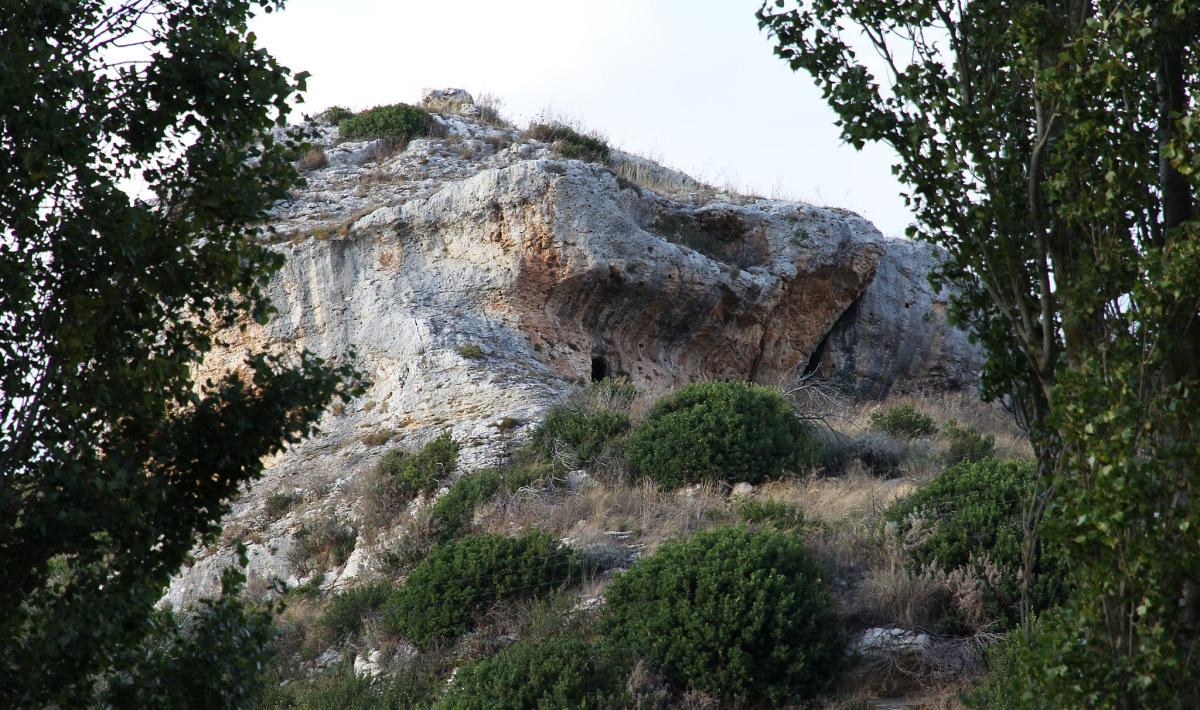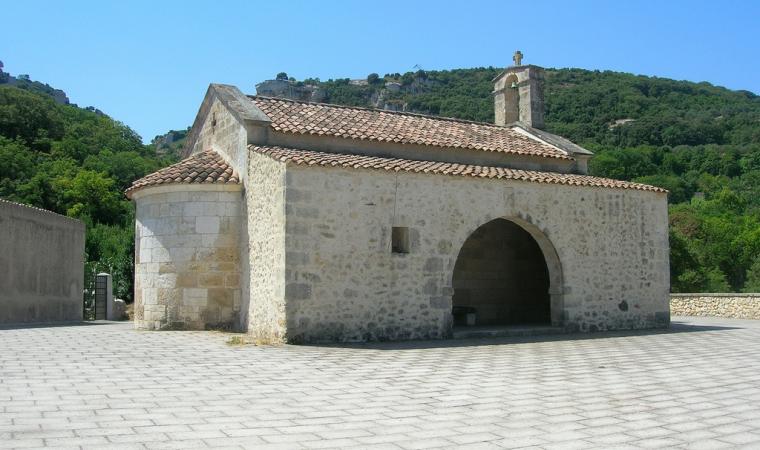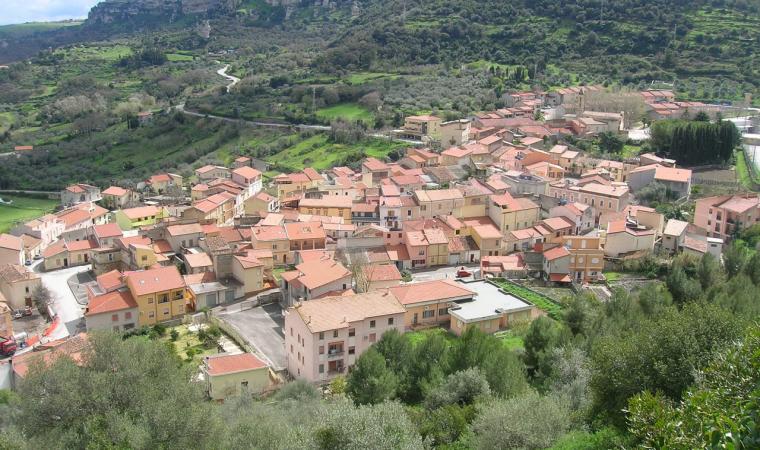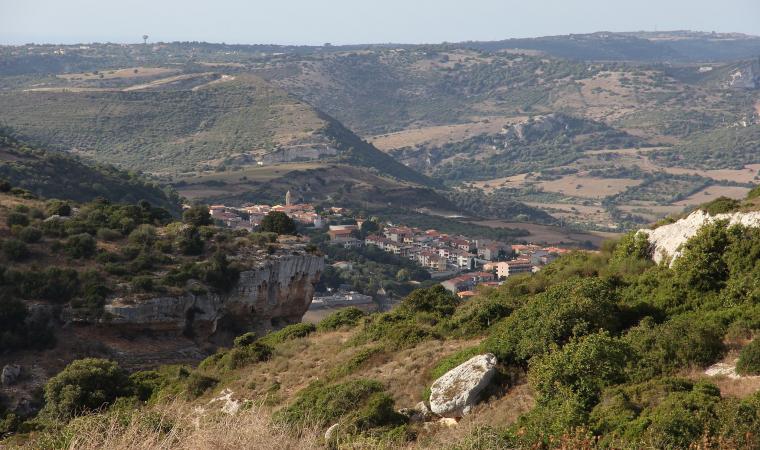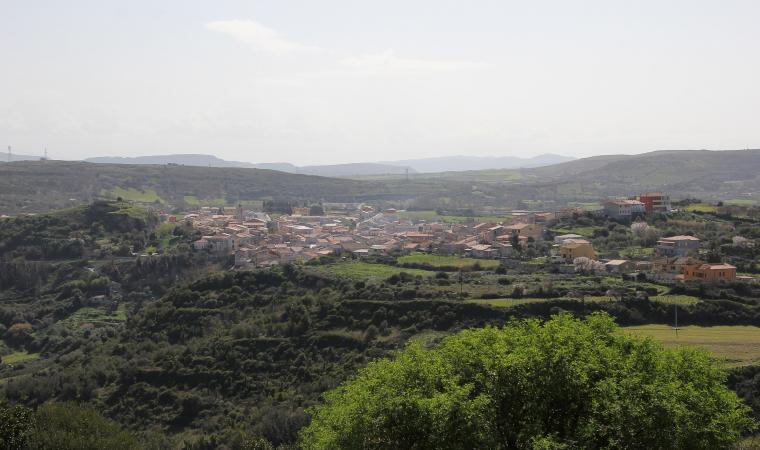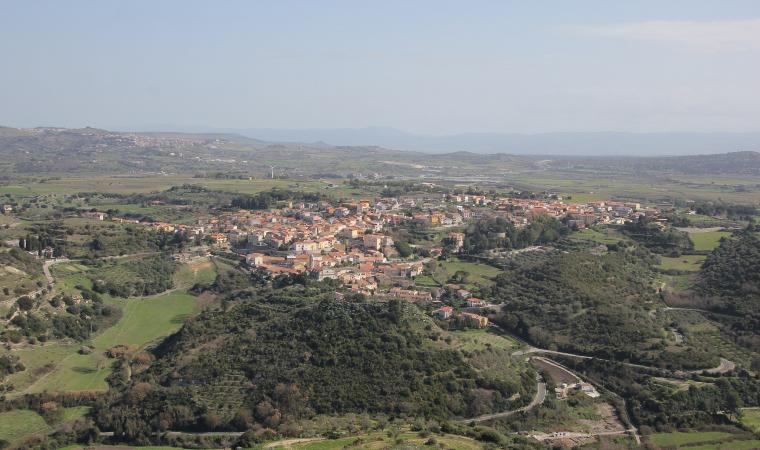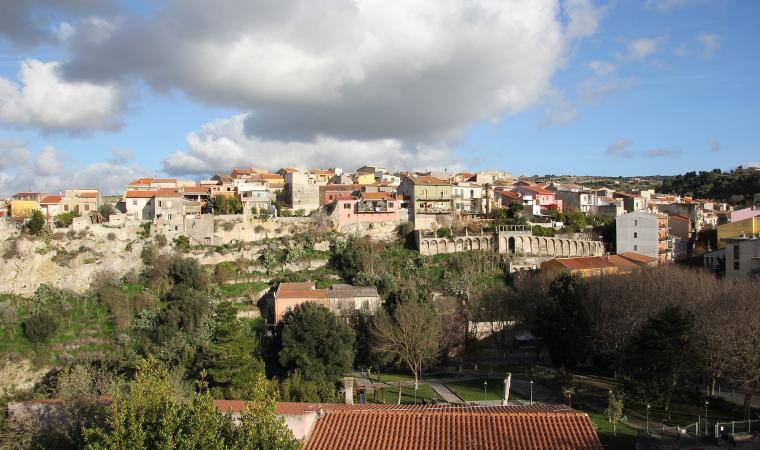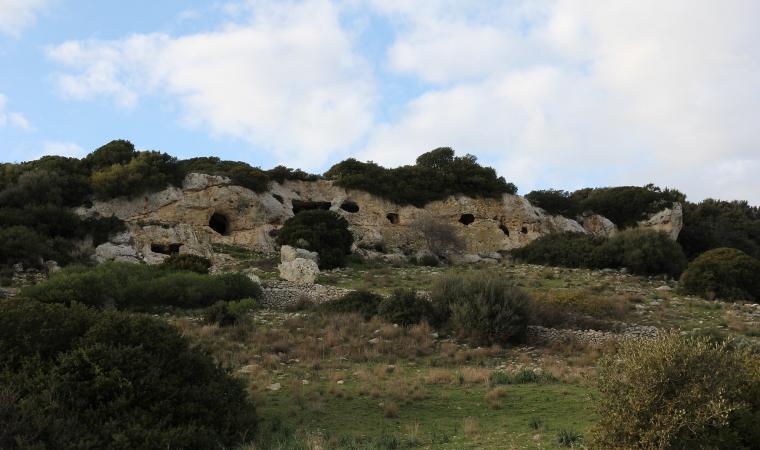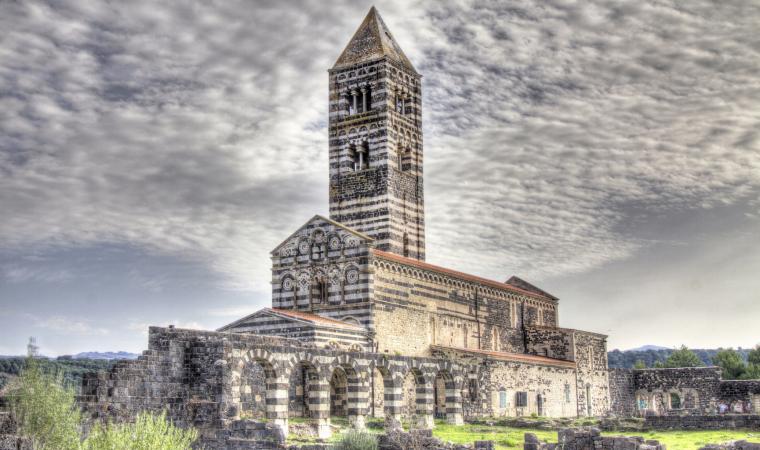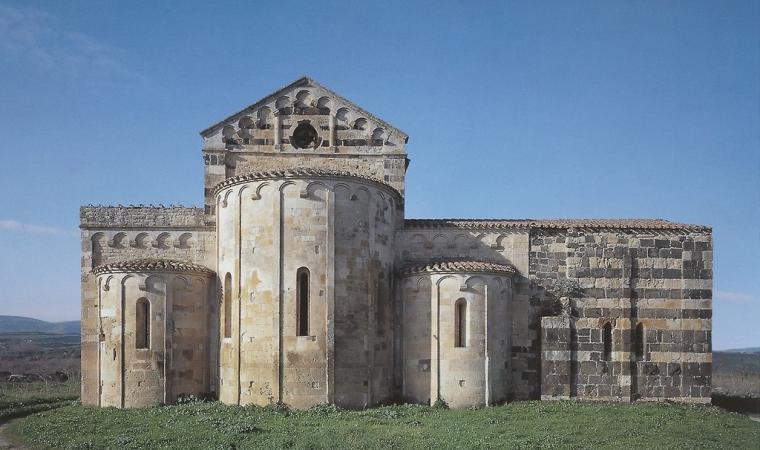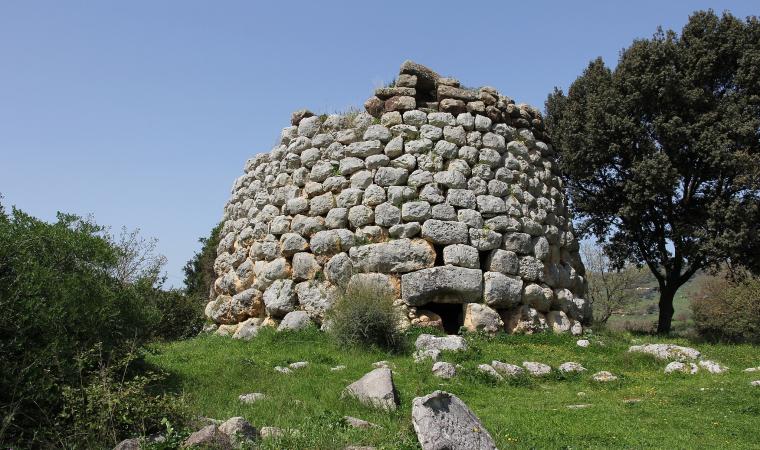Two groups of Domus de Janas: the first is on a hill, featuring simple hypogeal tombs and the closeness of an unusual ‘half’ nuraghe, while the second is further downstream, with a larger number of tombs, ornamental motifs and traces of reuse. These are the elements that distinguish the necropolises of Pedras Serradas and s’Elighe Entosu, only a few dozen metres apart but territorially belonging to two different municipalities in the Logudoro area: the first falls within the boundaries of Florinas, while the small valley of s’Elighe Entosu, with the burial ground of the same name, falls within the territory of Cargeghe.
The northern slope of the Pedras Serradas elevation has a wall overlooking the valley: this is the result of ancient landslides, which is how the location got its name. On the summit, you will notice a strange semicircular nuraghe: it is not clear whether it was deliberately built in the shape of a half tower or if the missing part collapsed into the valley. The five tombs, dug into the limestone rock, have the ‘classic’ layout, with an anteroom and a main room, to which a secondary room was added in some cases. You will notice raised decorative elements, such as pilaster strips, plinths and friezes. In tomb 1 there is also a counter and, in front of the entrance, lies a fragment of a curved stele. It may originally have decorated the façade of one of the tombs, which could therefore testify to reuse in the Nuragic age.
The necropolis of s'Elighe Entosu is sometimes thought to be linked to the burial system of the nearby Giorrè plateau, thus apparently making it a complex of 13 tombs, one of which with an architectural façade, dating back to the Bronze Age. Tomb 4 is particularly surprising. It is also known as the tomb ‘of the spirals’, as the walls of the anteroom feature a double spiral motif, created using the light hammer technique. It has a ‘T’ shaped layout, with the chamber extending transversely to the anteroom. The ceiling is decorated with grooves imitating a double-pitched roof, while a false door appears on the back wall. Tomb 1 is characterised by niches, while Domus 2 has the largest number of rooms - in fact, there are five of them. Instead, the bull symbol appears in Tombs 12 and 13.
The necropolises are the main attraction of the Florinas-Cargeghe stage of the Cammino di Santu Jacu, a spiritual path that stretches for about 1600 kilometres in 60 stages along the tracks of the places of worship dedicated to Saint James, scattered throughout the Island.

